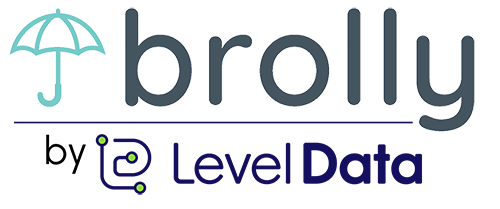Brolly Best Practices
Specially Designed Instruction, Data and Other Trends Facing Special Education Leaders

We recently had the opportunity to talk with Paul McDonald, owner of Paul McDonald Consulting, about the major topics he’s seeing in special education. Paul has 32 years of experience in education ranging from behavioral specialist to Director, Assistant Superintendent and Superintendent.
Over the last decade, he has shared the expertise developed in these roles though private consulting. Paul helps school districts in areas like specially designed instruction, response to intervention and multi-tiered systems of support. He also consults on eligibility, child find, IEP meetings, and other areas related to exceptional student programs.
Trends in Special Education
As we look to this school year and beyond, here are the major trends Paul’s noticing in the special education field.
Staffing
“The supply chain for staffing will continue to be an issue.”
One of the top challenges facing the special education profession is the availability of personnel. Paul has seen the trend evolving over the past 10 years in certain states. He observed it mostly with speech therapists, psychologists, and occasionally in physical or occupational therapy. But this year, it seems to also include special and general education teachers and paraprofessionals. Every aspect of staffing is being affected. Paul doesn’t specifically consult on staffing, so we won’t address it further here.
Using data to inform specially designed instruction
“We’re swimming in data, but it’s not informing practice.”
Most districts have an enormous amount of data on students. Such as state and local assessments, attendance, summative and formative classroom assessments, and current and past grades. However, they do not understand how to use that data to drive their instruction. For example, if a student is receiving special education services, districts don’t have a method of collecting data on the delivery of those services and the obtainment of the goals. Districts need a systematic way to collect, analyze, and utilize that data. Without data, it is challenging to drive special education instruction and provide the educational benefit expected for students receiving special education services.
Educational benefit
“A spotlight needs to be on educational benefit.”
Some districts struggle to understand why some students with disabilities aren’t academically or behaviorally improving. Students may meet IEP goals, but that growth isn’t necessarily reflected on statewide assessments. Why? If district staff don’t have access to their data or lack an understanding of the data, without a system to collect and analyze it, they could be overlooking key focus areas. Therefore, some students continue to fall further behind and are not receiving educational benefits from specially designed instruction.
Responding to trends
We asked Paul how districts should respond to these trends.
Offer professional development
Start by figuring out the skill level and knowledge of your staff. Then, based on the data collected, prioritize the areas where the team would benefit from additional learning opportunities. Such topics might include the difference between core instruction, differentiated instruction, universal design for learning, and specially designed instruction. Also, consider other topics like behavior modification techniques, data collection, and analysis.
Put components of the IEP to the test
By paying close attention to components of a student’s IEP, one can better understand the knowledge and skills level of staff.
When reviewing IEPs, ask questions like:
- Is there evidence in the present academic and functional performance levels that justifies the goals, objectives, services, and accommodations?
- Did the team discuss how the student performed in the general education classroom compared to typical peers?
- Do the goals and objectives align with the present academic and functional performance levels? Do they have a baseline (where the student is currently performing)? Is there a measurement, and can they be achieved in a year?
- Does the specially designed instruction (SDI) (services) align with the goals, objectives, and present academic and functional performance levels?
- Do they use data to drive all aspects of the IEP and services?
If you discover that the staff doesn’t understand how to put these components together or how to deliver SDI, a possible solution would be to provide training in these areas, followed by coaching in the implementation. You may be comfortable developing this PD on your own, or if you’d like additional expertise (and bandwidth), Paul can help.
Collect data, including classroom observations
Many districts don’t collect data on whether services are taking place, and few observe classrooms to see if specially designed instruction is occurring. Without this information, it isn’t easy to determine what is causing students not to grow academically.
For example, if a student is not improving, it’s tempting to add minutes to the IEP. To understand if that’s the correct action to take, it helps to ask the following questions.
- Are we sure that the services outlined in the IEP are occurring?
- What specially designed instruction is the teacher delivering during the service time?
- What are we doing differently for the student?
- If you reteach the core curriculum, would providing explicit, direct instruction in the area achieve more significant results?
- Would teaching the students strategies to bridge the gap be more effective?
If the student is not provided with SDI, then increasing the time on the IEP will not solve the problem.
Provide materials
Ensure that you have materials to support teachers in implementing the goals and objectives of the IEP. Although everything must be aligned with state grade-level standards, a teacher must have the knowledge and skills to plan the specially designed instruction necessary for a student to progress on their IEP goals. This can sometimes be difficult and require additional training and practice.
Practice effective communication and transparency
It is best to increase communication regarding compliance, instruction, and staffing during these challenging times. Suppose you raise the bar on compliance or change instructional practices. It is best to communicate it first. Explain why these changes are necessary. Then, to ensure buy-in and get staff onboard, share information on why you’re asking them to change what they are doing.
Implement systems to monitor compliance
Stop daily firefighting with compliance. Instead, build a system that allows you to spend 30-40% of your time in compliance and the rest on instruction. Compliance is one part (albeit an important part) of the bigger picture: teaching and academic performance is the most important aspect of special education.
Supporting Special Education Programs

Paul mentors and coaches special education directors across the nation. A Superintendent who wants to improve the outcomes of students with disabilities may engage Paul. Or a special education director who recognizes the role is changing (or is new to the role) and wants to leverage the knowledge of an external expert to improve their practice may utilize Paul’s services. If your team could benefit from Paul’s support, learn more and connect with him here:

